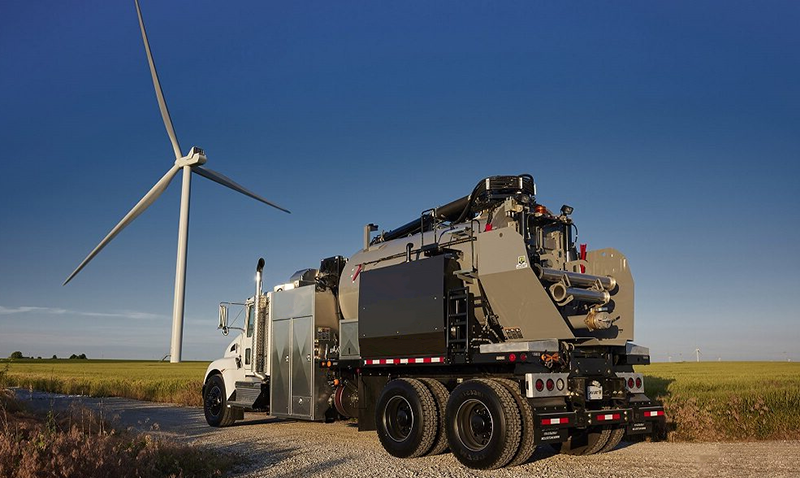The Evolution of Hydro Excavation
The industry has evolved over time.
Posted 14:53 August 28, 2024
Last Updated 14:53 August 28, 2024

The evolution of hydro-excavation, particularly as it relates to hydrovac trucks, reflects a broader trend in the construction and utility industries toward safer, more efficient, and environmentally responsible practices. Hydro-excavation has roots in the need to safely expose underground utilities, a need that became more pressing as urban infrastructure grew more complex throughout the 20th century. Over time, advancements in technology and increased awareness of safety and environmental concerns have driven significant developments in hydrovac trucks, the machines at the heart of the hydro-excavation process.
The concept of using water for excavation can be traced back to the early 1900s, when basic methods of jetting water into the ground were used to break up soil. However, it wasn’t until the mid-20th century that the idea of combining water with a vacuum system began to take shape. Early hydrovac equipment was rudimentary, typically involving separate systems for water and vacuum operations. These early machines were cumbersome and inefficient, with limited capabilities. The water was pressurized, but not to the degree that would later become standard, and the vacuum systems were often inadequate for handling large volumes of debris. Despite these limitations, these early innovations laid the groundwork for more sophisticated hydrovac technology.
The 1970s and 1980s marked a significant period of advancement in hydro-excavation technology. As the demand for safer excavation methods grew, especially in urban areas with dense underground networks, the construction industry began to adopt more specialized equipment. During this time, hydrovac trucks began to emerge as dedicated machines for hydro-excavation. These trucks were designed to integrate high-pressure water systems with powerful vacuum units, allowing for more efficient and precise excavation. The development of these early hydrovac trucks was driven by the need to prevent damage to underground utilities, a problem that had become increasingly costly and dangerous with the expansion of infrastructure.
By the 1990s, hydrovac trucks had evolved into more sophisticated machines, capable of performing a wide range of excavation tasks with greater safety and efficiency. The introduction of more powerful water pumps and improved vacuum systems allowed for deeper and more precise digging, making hydro-excavation a viable option for a broader range of applications. At the same time, the design of hydrovac trucks became more compact and mobile, making them more accessible to a wider range of construction projects. The increased efficiency of these machines, coupled with growing regulatory pressure to reduce damage to underground utilities, led to a rapid adoption of hydrovac trucks across the construction and utility sectors.
The early 2000s saw further advancements in hydrovac truck technology, driven by ongoing improvements in both equipment and safety standards. Hydrovac trucks became more versatile, with features like adjustable water pressure, heated water systems for cold climates, and enhanced debris storage capabilities. These advancements made hydro-excavation a more practical solution for projects in challenging environments, such as frozen ground or densely populated urban areas. Additionally, as environmental concerns gained prominence, hydrovac trucks were designed with features to minimize environmental impact, such as systems to contain and properly dispose of the slurry generated during excavation.
In recent years, the evolution of hydrovac trucks has continued, with a focus on increasing efficiency, safety, and environmental sustainability. Modern hydrovac trucks are equipped with advanced controls and automation systems that allow operators to perform precise excavations with minimal manual intervention. These systems often include real-time monitoring and diagnostics, which help operators optimize the excavation process and reduce the risk of errors. Additionally, the development of more fuel-efficient engines and environmentally friendly materials has made hydrovac trucks more sustainable, aligning with the growing emphasis on green construction practices.
One of the most significant trends in the evolution of hydrovac trucks is the integration of digital technology. Modern hydrovac trucks often come equipped with GPS systems, data logging, and remote monitoring capabilities, allowing for more accurate and efficient excavation. These technologies also facilitate better project management and record-keeping, as operators can track the progress of excavation in real time and make adjustments as needed. The integration of digital technology has also led to the development of more user-friendly interfaces, making it easier for operators to control the equipment and perform complex tasks with greater precision.
Looking ahead, the future of hydrovac trucks is likely to be shaped by ongoing advancements in technology, particularly in the areas of automation and sustainability. As the demand for safer and more efficient excavation methods continues to grow, manufacturers are likely to develop even more advanced hydrovac trucks, with features like fully autonomous operation, enhanced environmental controls, and improved energy efficiency. These innovations will likely make hydro-excavation an even more integral part of the construction and utility industries, as companies seek to reduce risks, minimize environmental impact, and improve overall project efficiency.
In conclusion, the evolution of hydro-excavation and hydrovac trucks has been driven by the need for safer, more precise, and environmentally responsible excavation methods. From the early days of basic water jetting techniques to the sophisticated, digitally integrated hydrovac trucks of today, the technology has come a long way. As the industry continues to evolve, hydrovac trucks will likely play an increasingly important role in the future of construction and infrastructure maintenance, reflecting the ongoing commitment to innovation, safety, and sustainability.
Contact Hole Hogz today to discuss your upcoming excavation project. We service Las Vegas, Henderson, Boulder City, and most parts of Clark County Nevada. We handle commercial, municipal, and residential accounts.
